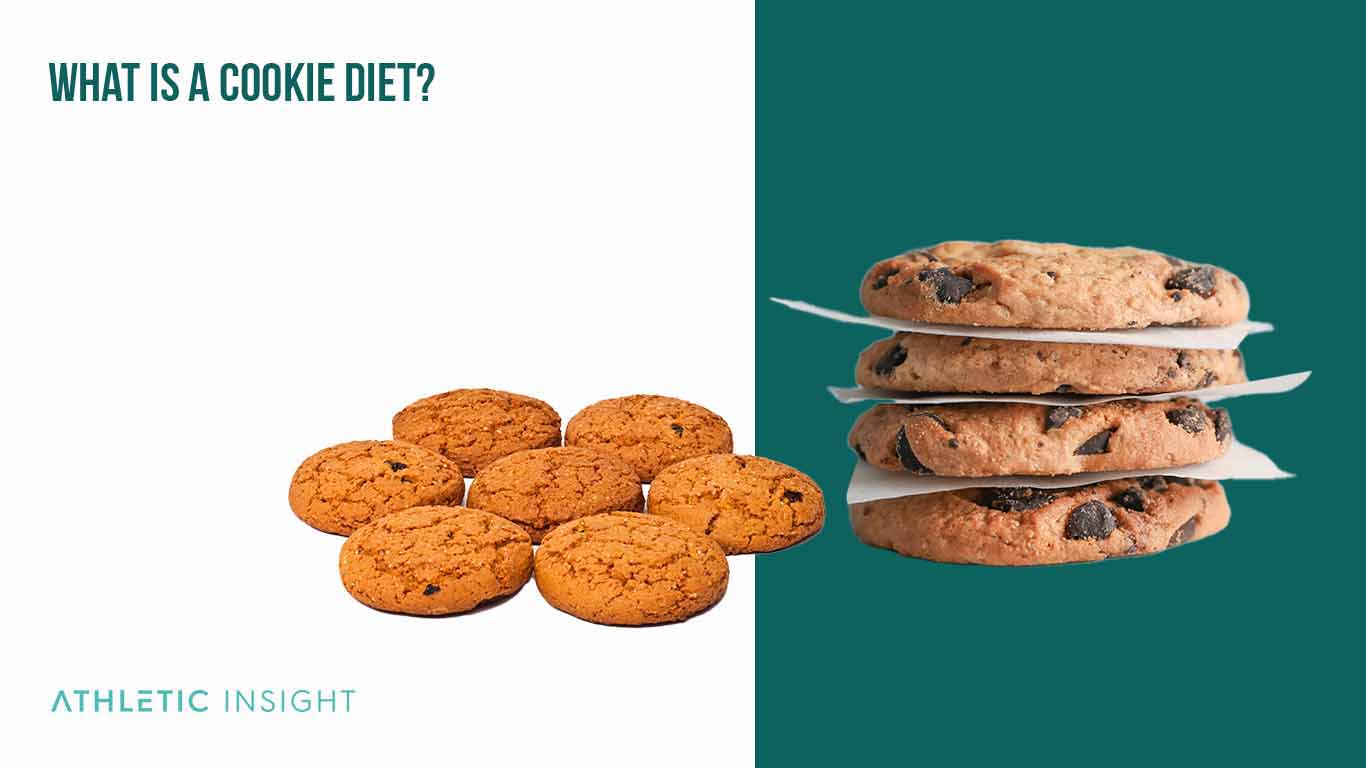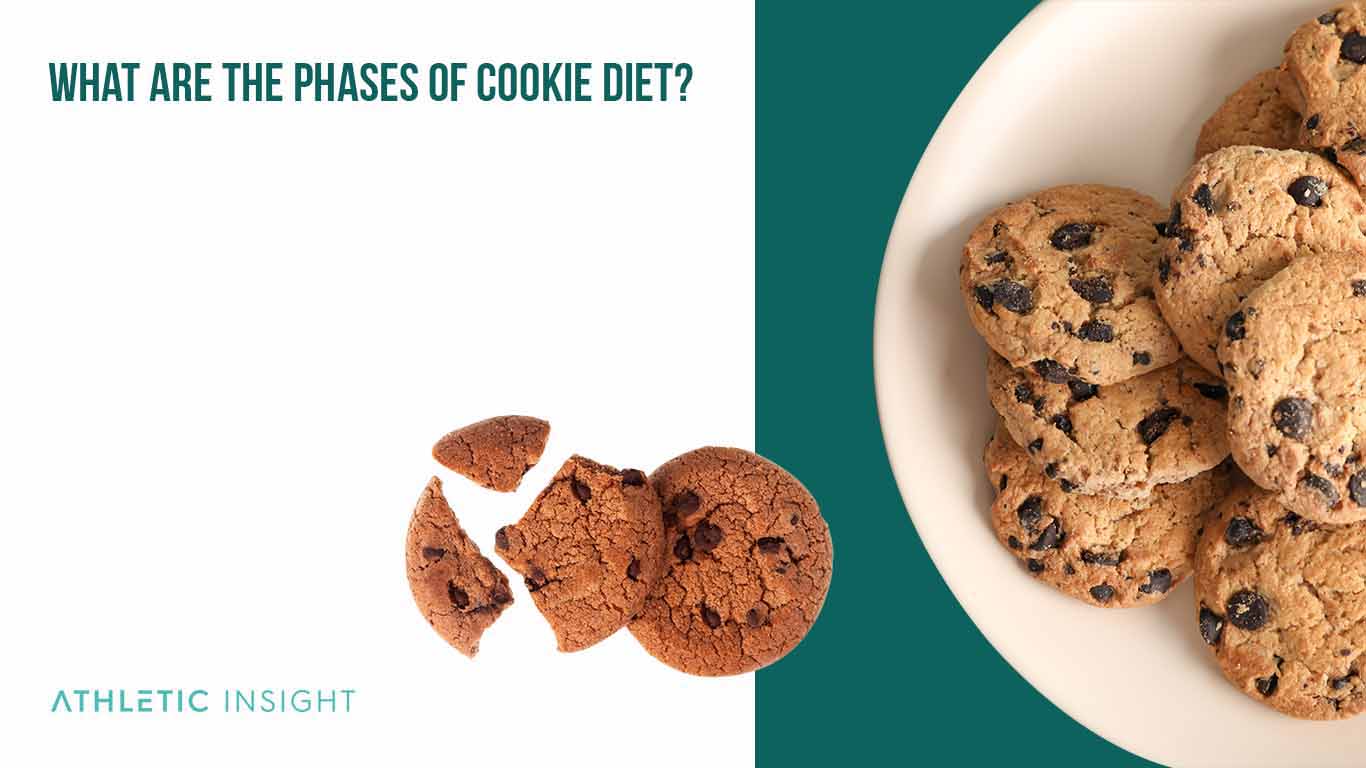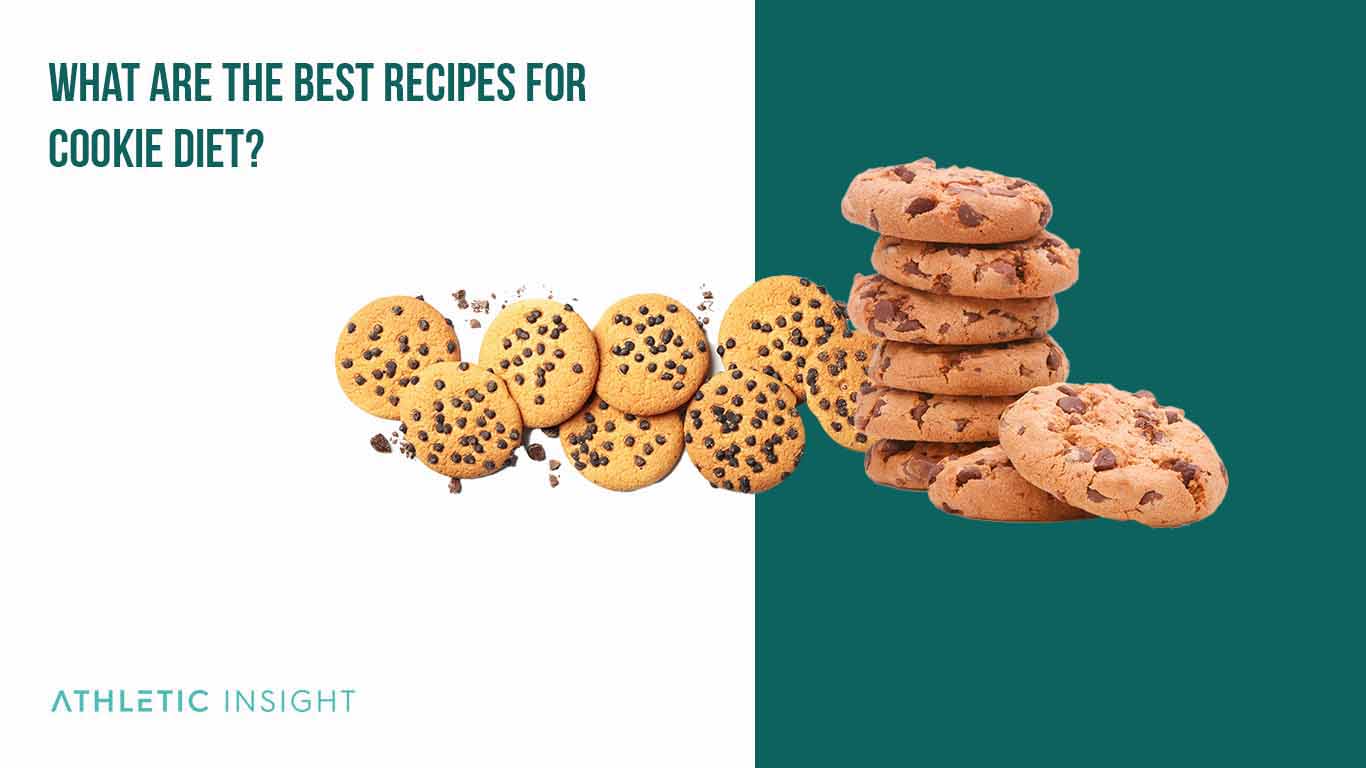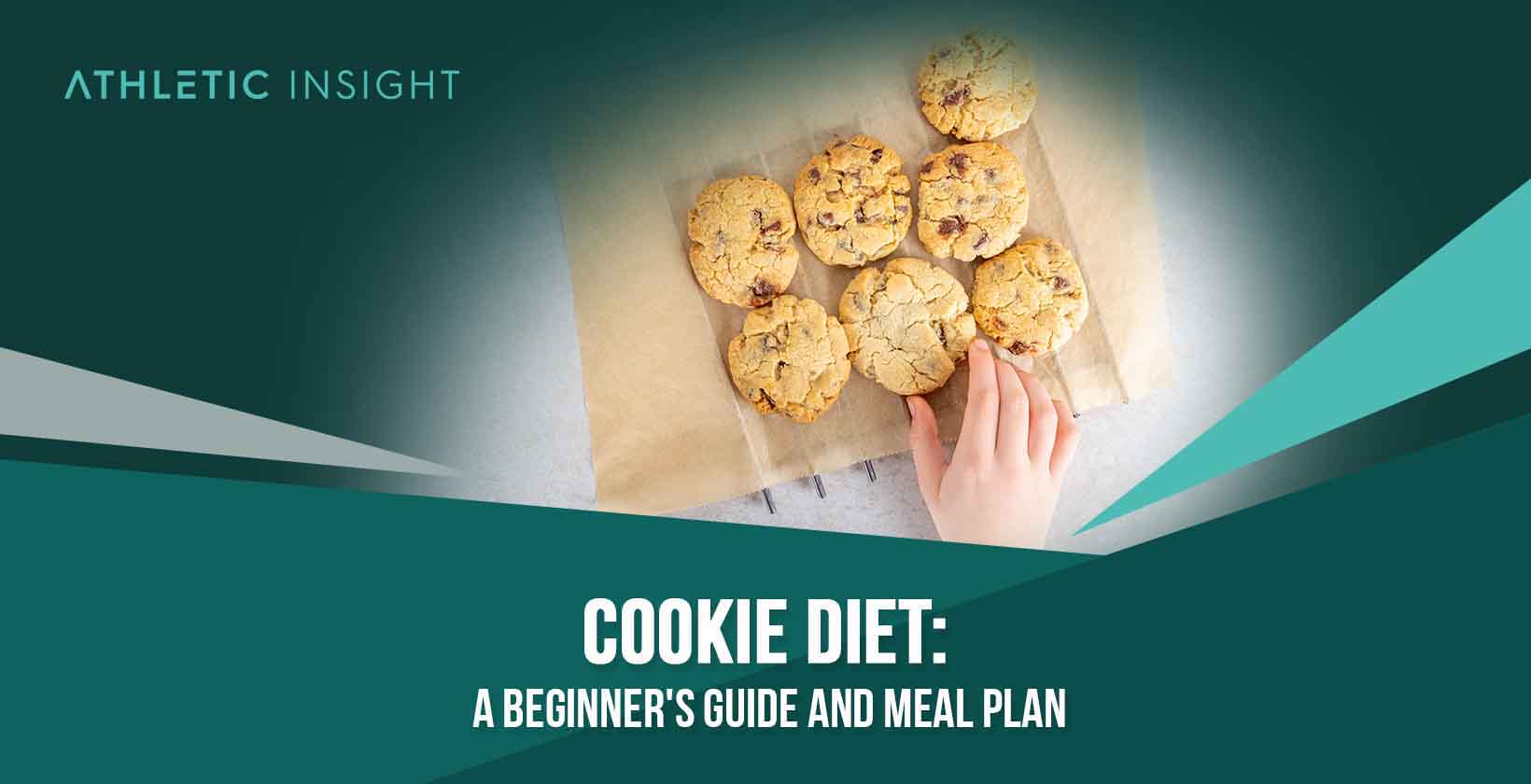The cookie diet is a way to lose weight by eating special nutritional cookies, instead of regular meals. These health cookies include high levels of fiber and protein, without many of the unwanted calories normal cookies contain.
One of the significant benefits of the cookie diet is that it helps people lose weight without feeling hungry. The cookies are formulated to provide all the essential nutrients while keeping the calorie count low. This means that people can eat cookies throughout the day without worrying about consuming too many calories, which can lead to weight gain.
Dr. Sanford Siegal created this diet in the 1970s, and it’s remained popular over the years because it’s simple to follow. He realized humans need specific amino acids to function, so he baked them into cookies to control hunger. People eat six cookies throughout the day, followed by a small dinner, to ensure they consume enough calories.
There are different cookie diets, including Dr. Siegal’s Cookie Diet, the Hollywood Cookie Diet, the R&D Diet Cookie, and the Smart for Life Cookie Diet.
- Dr. Siegal’s Cookie Diet: The Dr. Siegal’s Cookie Diet has several weight loss plans, providing about 500 calories from cookies and the other 500 from a well-balanced meal.
- Hollywood Cookie Diet: The Hollywood Cookie Diet provides four cookies daily to cover breakfast, lunch, and two snacks, supplemented by a healthy dinner.
- R&D Diet Cookie: The R&D Diet Cookie provides 400 calories daily in cookie form and encourages people to follow another diet, like Atkins, for their remaining calories.
- Smart for Life Cookie Diet: The Smart for Life Cookie Diet is a subscription service that provides seven small meals daily to help people lose weight while getting healthy.
What Is a Cookie Diet?
A cookie diet is a weight loss program that replaces meals with healthy cookies that provide plenty of fiber and protein without adding too many calories. Manufacturers of this diet plan create specially formulated cookies to provide all the nutrients you’ll need to stay healthy without feeling hungry.

You will eat the cookies with a glass of water, typically starting about an hour after you wake up and you’ll consume only cookies for breakfast, lunch, and two snacks, one in the mid-morning and one in the early afternoon. You’ll eat a balanced meal of whole foods for dinner to get enough calories, nutrients, and healthy food.
How Does Cookie Diet Work?
The cookie diet works by limiting calorie intake and providing the body with the necessary nutrients, including protein and fiber. When a person consumes the cookies, the fiber and protein content in the cookies help to reduce hunger and keep them feeling full for longer periods of time.
The cookies are formulated to contain specific amino acids that help to control hunger, so the person eats less and consumes fewer calories throughout the day. The cookies also contain fewer calories than a regular meal, which helps reduce the overall calorie intake.
By consuming fewer calories, the body enters a state of calorie deficit, where it starts to burn fat for energy instead of relying on the glucose from food. As the body burns fat for energy, the person starts to lose weight and shed excess fat. Over time, the body adjusts to the lower calorie intake, and the person’s metabolism slows down, leading to weight loss.
What Are the Phases of a Cookie Diet?
There are two main phases of the cookie diet; weight loss phase, weight maintenance phase.

1. Weight Loss Phase
The weight loss phase happens as soon as people start the cookie diet. It’s based on the premise of the “10x formula,” meaning people set goals ten times higher than usual and work ten times harder to reach them.
With that in mind, people start the weight loss phase by eating nine cookies daily, spaced out throughout the day, followed by a dinner of fish or lean meat with vegetables.
The weight loss phase requires people to eat every two hours to prevent the feeling of hunger that may push them to break the diet by eating other snacks. Eating so often also keeps their metabolisms working constantly, promoting more weight loss.
People stay hydrated by drinking at least eight glasses of water daily, which prevents them from feeling hungry in the weight loss phase. While people can lose weight without exercising at this time, they can be active in moderate doses. Due to the decreased calorie intake, people should avoid extreme workouts and walk for 30 minutes three times a week to stay active.
It’s possible to stay in the weight loss phase for four to six weeks, but people can follow it as long as they need until they reach their goal weight.
2. Weight Maintenance Phase
Once people reach their weight loss goals, they move into the weight maintenance phase to keep themselves from regaining weight and returning to an unhealthy diet.
In the weight-maintenance phase, people eat two to five cookies instead of nine. These cookies are snacks instead of meals, as the maintenance phase reintroduces healthy meals for breakfast, lunch, and dinner.
As with the weight-loss phase, people still need to drink at least eight glasses of water daily to hydrate and feel full. Since they’re eating more lean meat and vegetables and have adapted to the program, people can now return to their moderate or advanced exercise plans comfortably.
During this phase, it’s possible to reintroduce more whole foods into the diet, gradually increasing the calorie intake until people find the ideal level for their needs. If they notice they’re putting on too much weight, they can add more cookies to their diet or go back to the weight-loss phase.
What Are the Health Benefits of a Cookie Diet?
There are many health benefits of the cookie diet, including weight loss, improved digestion and increased metabolism.
- Weight loss
- Improved Digestion
- Increased Metabolism
The primary benefit of the cookie diet is weight loss. The specially formulated cookies provide all the necessary nutrients, protein, and fiber that people need while limiting calorie intake. By eating the cookies throughout the day, people feel full and satisfied without consuming too many calories.
The other two main health benefits of the cookie diet is that the ingredients within the cookies can aid in digestion and metabolism. As a result, the body will not only continue to lose weight, but fat will be targetted and you’ll have less gastrointestinal discomfort.
The cookie diet is also affordable, especially when compared to other weight-loss programs. People can buy the cookies in bulk, which reduces the overall cost. During the weight-loss phase, people only need to buy ingredients to prepare their daily dinner.
Lastly, it is worth noting that the cookie diet is convenient and easy to use. People can carry the cookies with them wherever they go and eat them as a replacement for meals. This makes it an ideal diet for people with busy lifestyles or those who don’t have time to prepare meals.
What Are the Health Risks of a Cookie Diet?
Despite being a well-known regimen, the cookie diet still has associated risks.
- Food restrictions: People may find it difficult to stick to the restricted diet and may experience cravings for other foods.
- Caloric restriction: The cookie diet limits calorie intake to 1,000 to 1,200 calories per day, which may not be sufficient for some people, leading to fatigue, weakness, and other health problems.
- Processed foods: While the cookies contain fiber and protein, they are made with processed ingredients, which are less nutritious than whole foods. Relying on processed foods may lead to nutrient deficiencies.
- Health risks for certain groups: The cookie diet may not be suitable for people with certain dietary restrictions, such as those who require gluten-free or dairy-free diets. It may also be unsafe for people with underlying health conditions, such as diabetes or heart disease, as it can cause fluctuations in blood sugar levels and may not provide sufficient nutrients for optimal health.
It’s essential to consult a healthcare provider before starting any new diet, including the cookie diet, to ensure it’s safe and appropriate for individual health needs.
How To Do Cookie Diet?
It is straightforward to follow the cookie diet.
- Replace your meals with special nutritious cookies.
- Eat six to nine cookies daily, or every two hours, to prevent hunger.
- Eat lean meat or fish for dinner, along with vegetables.
- Drink enough water to stay hydrated and prevent hunger.
- Follow the diet until reaching the goal weight.
- Shift into weight maintenance, eating cookies as snacks.
People need to eat 1,000 to 1,200 calories daily on the cookie diet. In the weight loss and maintenance phases, at least 500 calories should come from cookies.
It’s possible to stay in the weight loss phase for four to six weeks and the maintenance phase for as long as necessary. The goal is to lose weight and keep it off while making healthy choices regarding the non-cookie calories consumed.
You should consult with a healthcare professional before starting the cookie diet, especially if you have any underlying health conditions or concerns.
What Are the Restricted Foods for Cookie Diet?
Instead of listing the foods restricted for the cookie diet, it’s better to mention what people can eat.
- High-calorie snacks and junk food
- Processed foods and artificial ingredients
- Sugary foods and drinks
Avoid high-calorie snacks and junk food, such as candy, chips, and sugary drinks. These foods are high in calories and can sabotage your weight-loss efforts.
Processed foods and artificial ingredients should also be avoided on the cookie diet, as they can contribute to weight gain and poor health.
Sugary foods and drinks should also be avoided on the cookie diet. Sugar can increase your calorie intake, cause blood sugar spikes and crashes, and make it harder to lose weight.
What Products Should You Buy for a Cookie Diet?
People following Dr. Siegal’s Cookie Diet can buy cookies directly from the source. These cookies are specially formulated to provide all the nutrients, protein, and fiber people need to feel full and satisfied without adding too many calories. One week of cookies from Dr. Siegal is about $80, while one month is $200.
Where Can I Buy Cookie Products for a Cookie Diet?
It’s possible to buy cookies from other outlets. Dr. Siegal sells the official products, but the Hollywood Cookie Diet and the Smart for Life Cookie Diet have products available online. Both options are more expensive than Dr. Siegal’s but offer different flavors, so it’s a good way to prevent feeling stagnant during dieting.
Who Should Do the Cookie Diet?
People who want to lose weight without the learning curve of creating and preparing balanced meals should do the cookie diet. The simplicity of having nutritious cookies on hand simplifies the dieting process and makes weight loss easier than with other options.
Consider the cookie ingredients before starting this diet. They contain wheat and milk and aren’t acceptable for anyone following a gluten-free, dairy-free, or vegan diet. Anyone with questions about their health should talk to a doctor before starting the cookie diet.
Who Are the People Who Need To Do a Cookie Diet?
People who need to lose weight quickly should do this diet. It’s easy to buy the cookies to have on hand to make healthy choices when feeling hunger pangs. Instead of needing to research whole foods or other diet options that require food preparation, the cookie diet streamlines the process.
With portion control and healthy cookies ready to go, anyone who’s too busy to prepare healthy meals needs to do the cookie diet.
What Are the Best Recipes for Cookie Diet?
With the cookies already made, people on the cookie diet only need to think of lean meat, fish, and vegetable recipes.

- Meatballs and spaghetti squash
- Meatloaf and potatoes
- Ground turkey and potato gratin
- Salad topped with salmon
- Taco soup
These recipes prioritize great tastes with healthy proteins and vegetables at their core. According to Dr. Siegal, during the cookie diet, you should only have one meal: dinner. It should consist of 6 ounces of chicken, turkey, fish, or seafood.
What Is a Sample Cookie Diet Plan?
During the weight-loss phase, people should follow the following schedule for the cookie diet:
- Breakfast: Two cookies
- Early-morning snack: One cookie
- Late-morning snack: One cookie
- Lunch: Two cookies
- Early-afternoon snack: One cookie
- Late-afternoon snack: One cookie
- Dinner: 500 to 700 calories of lean meat, fish, and vegetables
- After-dinner snack: One cookie
During the weight maintenance phase, people should switch up the cookie diet with the following type of meal plan:
- Breakfast: Eggs, vegetables, and berries
- Mid-morning snack: One or two cookies
- Lunch: 500 calories of lean meat, fish, and vegetables
- Mid-afternoon snack: One or two cookies
- Dinner: 500 calories of lean meat, fish, and vegetables
- Optional after-dinner snack: One cookie
The maintenance phase is how people can follow the cookie diet long-term because they’re eating regular food along with the cookies. The cookies mostly supplement healthy meals by providing additional protein and fiber without adding calories to the diet.
On both the weight loss and maintenance phase meal plans, people should drink at least eight glasses of water daily, which helps them feel full without consuming empty calories.
What Are the Facts About Cookie Diet?
The facts about the cookie diet help people understand what it offers and how they can reach their goal weight.
- Curbs hunger. These cookies contain enough protein and fiber to curb hunger and help people feel fuller, especially if eaten every two hours as directed.
- Low-calorie choice. The low-calorie cookies make it easier than ever to stick to a diet of 1,000 to 1,200 calories daily.
- Promotes weight loss. Due to the decreased calorie intake balanced with protein and fiber, the cookie diet promotes a loss of up to 17 pounds a month.
- Easy to follow. By replacing meals and snacks with cookies, people can easily follow this diet without needing to prepare healthy meals at home or risk backsliding with accessible fast food.
- Plenty of options. The cookies come in many flavors, like butterscotch, chocolate, cinnamon, and maple. While people eat cookies for most meals and snacks, there is a chance for variety to ensure they can follow the diet longer.
In addition to those facts, the cookie diet is naturally low in saturated fat and cholesterol. With these factors, the cookie diet is a great way to lose weight without needing to completely overhaul an existing meal plan.
How Long Should a Cookie Diet Last?
The weight loss phase lasts four to six weeks, but the maintenance phase can last as long as necessary.
Is Cookie Diet Considered a Healthy Diet?
No, the cookie diet isn’t the healthiest option because of the processed ingredients and lack of fresh fruit in the meal plan. However, people using the cookie diet for weight loss can then integrate elements of a balanced diet into the maintenance phase to make it healthier.
Does Cookie Diet Really Work?
Yes, the cookie diet really helps people lose weight. If they make healthy choices during the maintenance phase and watch their calories, it can work long-term.
Is Cookie Diet Expensive?
No, the cookie diet isn’t much more expensive than a standard grocery bill. In the weight loss phase, people eat cookies for almost every meal, so the cost of the cookies makes up some of the grocery bills.
As people shift into the maintenance phase, they eat more lean proteins and vegetables and fewer cookies, so the price continues to even out over the entire process.
Is Cookie Diet Keto?
A keto diet reduces carbohydrate intake and adds fat for the body to burn as energy. On a keto diet, people eliminate grains, starches, sugar, fruit, and unhealthy fats. The diet focuses on meat, fish, eggs, cheese, and low-carb vegetables.
The cookie diet differs from keto because it lowers calorie intake while providing protein and fiber. However, both diets can include lean meats, fish, and vegetables. The cookie diet supplements those foods with cookies, while the keto diet adds cheese and egg.



